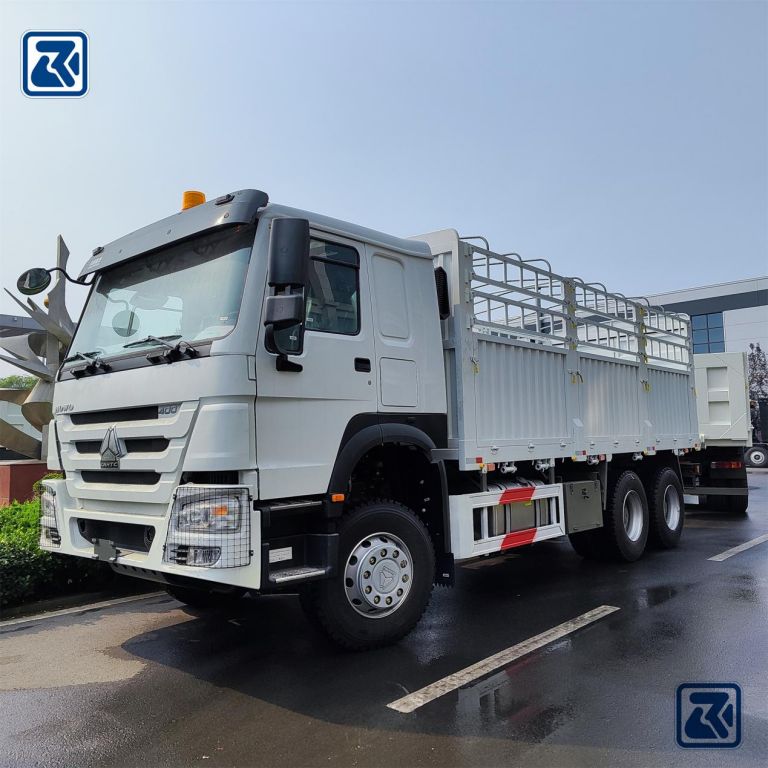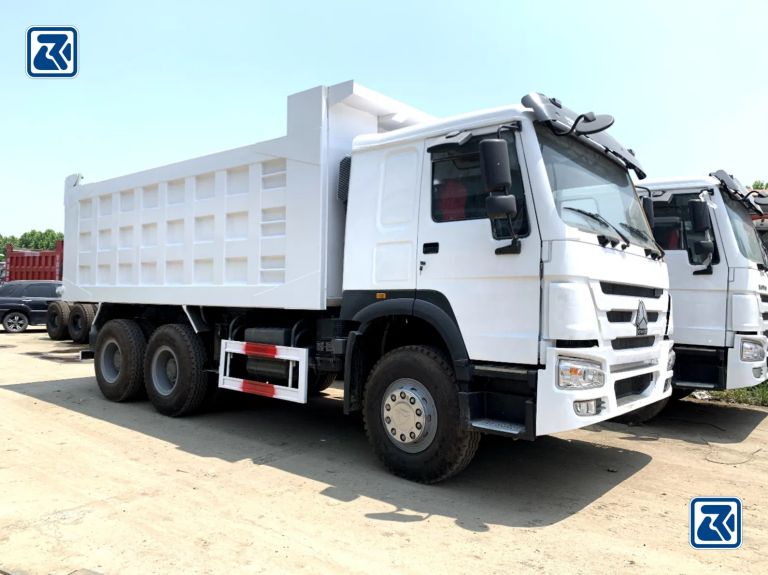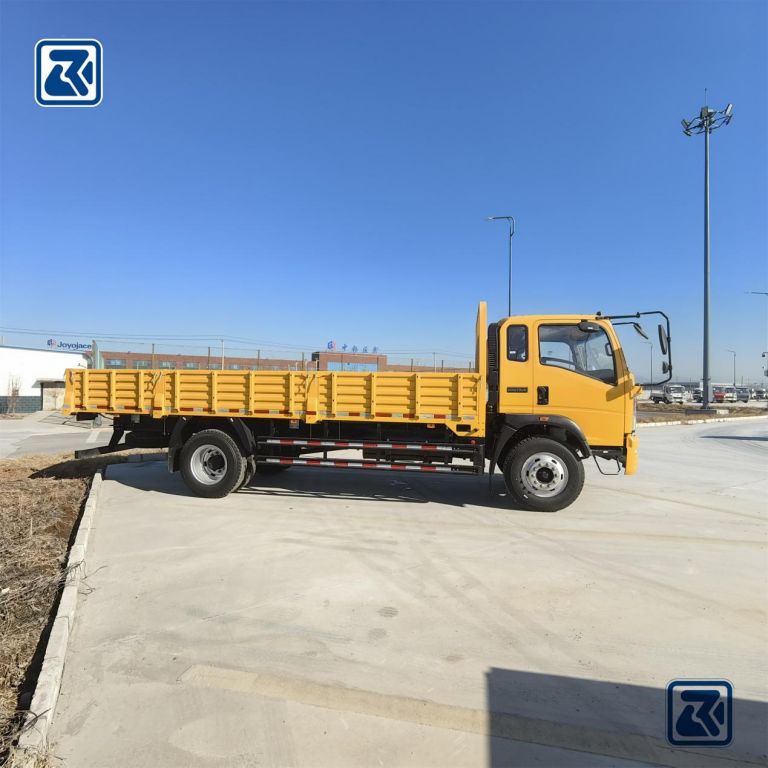NEEDL EMARK PT DJARUM .CN INTERNATIONAL GROUP CHINA CO., LTD. is a renowned truck export trade company, and our HOWO trucks have performed exceptionally in the market. The HOWO series truck-mounted cranes are widely used in industrial fields such as construction and transportation due to their efficient and reliable performance. Understanding the working radius of HOWO truck-mounted cranes is crucial to ensuring that they meet your projects’ specific lifting and operational needs.
The working radius refers to the distance from the crane’s center point to the load’s center during operation. The load capacity and stability of the crane vary at different working radii. Therefore, selecting the appropriate working radius effectively enhances operational efficiency and ensures safety during operations.
When performing lifting operations, accurately assessing the working radius can help operators distribute the weight properly, preventing accidents caused by overloading or improper handling. Additionally, understanding the working radius can optimize the vehicle’s working path, reducing unnecessary movements and thus improving work efficiency. Therefore, when selecting and using truck-mounted cranes, it is crucial to fully consider their working radius to ensure the smooth progress of the project.
Table of Contents
Factors Affecting the Working Radius
The main factors affecting the working radius include the following:
Boom Length: The boom is the structural part of the crane used to support and carry loads. The length of the boom directly determines the maximum working radius—the longer the boom, the greater the distance that can be reached. However, an excessively long boom may lead to decreased stability in certain situations.
Crane Configuration: Different types of cranes (e.g., crawler cranes, wheeled cranes, tower cranes) have different designs and configurations. The crane’s base, outriggers, and slewing system configurations all influence its working radius under specific load conditions.
Load Weight: The load capacity of the crane is usually inversely proportional to the working radius. The heavier the load, the smaller the working radius. When designing a crane, it is essential to ensure a safe working radius under maximum load conditions.
Terrain and Environmental Conditions: On uneven or sloped ground, the stability of the crane is affected, which limits its working radius. Additionally, environmental factors such as wind speed, temperature, and ground hardness also affect the crane’s working capacity and operational working radius.
Tips for Choosing the Right Crane Model
Assess Project Needs: Based on the specific needs of the on-site operation, first, assess the required maximum working radius and load weight.
Understand Crane Characteristics: Different types of cranes perform differently under various conditions. When choosing, consider the boom length and load capacity.
Consider Terrain Adaptability: Select a crane model suitable for the site terrain to ensure optimal stability and performance.
Consult Specifications Manual: Refer to the crane’s specifications manual to confirm its working radius under specific loads and related data.
Consult Professionals: If in doubt, it is advisable to consult the crane supplier or professionals to get suitable advice.
Working Radius by Model
The specific working radius varies depending on the model, but generally, the following are the typical working radii for different models of HOWO truck-mounted cranes:
HOWO 8-ton Crane: The working radius is about 8-10 meters. It is suitable for smaller construction projects and light logistics handling, such as lightweight material transfer at small construction sites and urban construction.
HOWO 12-ton Crane: The working radius is about 10-12 meters. It is ideal for medium-sized construction projects and equipment installation, such as medium-sized construction sites and facility maintenance.
HOWO 16-ton Crane: The working radius is about 12-15 meters. It is suitable for large construction projects and heavy industrial applications, such as large-scale construction engineering and heavy machinery handling.
The specific parameters vary depending on the model and configuration. The above data are for reference only, and specific figures should be determined according to the specific crane model.
Safety Considerations During Operation
When operating the crane, especially at or near the maximum working radius, key safety considerations include ensuring that the load is within the crane’s rated capacity, regularly checking the stability of the equipment, following the manufacturer’s operating guidelines, and checking the safety limits of various configurations on the load chart.
Additionally, ensure that the ground has sufficient load-bearing capacity and is level to avoid the risk of tipping. Maintain clear visibility and communication to ensure operational safety.
Maintenance Practices to Ensure Optimal Performance
To ensure the crane operates optimally at various working radii, maintenance practices are crucial. Here are some specific maintenance tasks and their importance:
Regular Hydraulic System Inspection: Check the hydraulic oil level and quality, ensuring the cleanliness and appropriate viscosity of the hydraulic oil. Regularly inspect hydraulic lines and fittings to prevent leaks.
Boom Maintenance: Regularly inspect the boom structure for cracks, deformations, or fatigue, and use professional detection tools to check the integrity of welds and connection points.
Crane Cable Inspection: Inspect the cables’ appearance to ensure there is no wear, breakage, or aging, especially paying attention to cable damage at high-frequency bending points.
Slewing System Maintenance: Check the gears and bearings of the slewing system for wear or damage, regularly lubricate the slewing components, and keep the slewing system clean to prevent dust and dirt from affecting its performance.
By following these maintenance practices, the crane can operate normally and safely at various working radii, improving the equipment’s overall performance and service life.
Conclusion
Understanding the working radius of HOWO truck-mounted cranes is crucial for ensuring safety and efficiency in construction. The working radius directly affects the crane’s operating range and load capacity, thereby influencing the overall performance of the project. When choosing a crane, considering the specific operational needs, load requirements, and operating environment is key. To make the best choice, it is advisable to consult the experts at HOWO Special Trucks Co., Ltd., who can provide professional advice based on your actual needs and help you select the most suitable crane model to ensure the smooth progress of your project.
FAQ
The working radius of the HOWO 6×4 crane is about 14-16 meters, the 8×4 crane is 18-22 meters, and the 10×4 crane is 20-25 meters. Specific data depends on the model.
The heavier the load, the smaller the working radius. Under high load conditions, the working radius needs to be shortened to ensure stability; under light load conditions, a larger working radius can be supported.
Ensure that the crane’s outriggers are firmly deployed, and adhere to load limits, the operator should be professionally trained, check that the site is free of obstructions, and maintain regular equipment maintenance.
HOWO helps customers choose the appropriate crane model by evaluating their needs, recommending suitable models, providing data support, and conducting on-site surveys. They also offer training and technical support.




